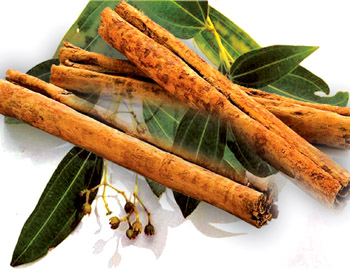Cinnamon industry faces new challenges
by Gamini Warushamana
Sri Lanka's Cinnamon industry has faced a new challenge in our main
markets as some buyers demand a new standard on sulphur dioxide residue
and experts fear that if solutions are not found it will adversely
affect the industry.
 Senior Research Officer, Industrial Technology Institute (ITI) K.R.
Dayananda said that the new sulphur dioxide residue content of 10 ppm
(particle per million) demanded by some buyers is a difficult task under
the present cinnamon processing method. Senior Research Officer, Industrial Technology Institute (ITI) K.R.
Dayananda said that the new sulphur dioxide residue content of 10 ppm
(particle per million) demanded by some buyers is a difficult task under
the present cinnamon processing method.
EU countries have enforced a standard on cinnamon and are strict on
the sulphur dioxide residue content at 150 ppm level during the past
three years. Sulphur dioxide is used to fumigate cinnamon in the
traditional cinnamon processing method we still use.
Cinnamon is mainly used as a flavour. However, after scientific
evidence proved the medical value of cinnamon such as reducing blood
cholesterol and blood sugar, cinnamon is now used as a beverage and in a
wide range of food. Some buyers have now placed the minimum sulphur
dioxide residue standard at 10 ppm level for processed cinnamon.
ITI researchers are working to find better processing methods that
reduces the sulphur dioxide residue level. Dayananda said that the
present cinnamon processing method has no scientific base but it has
been used for centuries.
Fumigation with sulphur dioxide reduces the microbial count and
insects drastically. It also changes the colour of the cinnamon bars and
improves the quality of the cinnamon.
Dayananda said that alternative fumigation methods such as ozone and
super heated steam are available but are expensive. Since there is much
competition for cinnamon from cassia (Chinese cinnamon) the increase in
the processing cost will adversely affect the market.
Meanwhile, Sri Lanka will lose its brand advantage with the botanical
name of cinnamon, Dayananda said. India has proposed to the
International Standard Organisation (ISO) to change the botanical name
of cinnamon in the documentation of the ISO and a meeting had been
called by the ISO to discuss the matter last Wednesday in Paris.
The botanical name of cinnamon is Cinnamomum Zeylanicum Blume and now
India has requested to change the name to Cinnamomum Verum J. Presel.
The botanical name Cinnamomum Zeylanicum Blume, "Zeylanicum"
signifies that it has originated in Ceylon (Sri Lanka) and therefore it
has a brand value in the market. This name was used for centuries and
Sri Lanka is the only commercial producer of Cinnamon.
However, India is now growing cinnamon in Kerala and Madagascar also
produces small quantities.
Dayananda said that according to ethics in naming plants the name
change can be justified. The Cinnamoum Zeylanicum Blume was accepted in
1826 while the Cinnamoum Verum J.Presel was accepted in 1825.
Therefore, it is fair to give the botanical name Cinnamoum Verum.
However, the name change will affect the brand advantage we have, he
said.
Sri Lanka's representatives at the meeting were ready to keep the
name unchanged, however the outcome of the meeting has not been
reported.
Dayananda said that there is intense competition for Sri Lankan
cinnamon from cassia, a very close substitute. In some of our export
markets both are called canela. Cassia is produced in large quantities
and we annually export around 15,000 tonnes of true cinnamon a year
while cassia production is around 50,000 tonnes.
The main ingredient that contributes to the cinnamon taste and aroma
is cinnamic aldehyde. In true cinnamon the cinnamic aldehyde amount is
64-75% and in Cassia it is 85-90%.
However, in cassia the other ingredient that contributes to the real
cinnamon flavour does not exist.
On the other hand cassia contains a high percentage of coumarin, an
ingredient that should not be contained in food. In cassisa the coumarin
percentage is as high as 5% and in true cinnamon it is only 0.004%.
These are the main advantages we have and we should promote these
values. Under this condition the North American market where 60% of our
cinnamon exports go is safe, but other markets are not so, he said.
[email protected]
|
